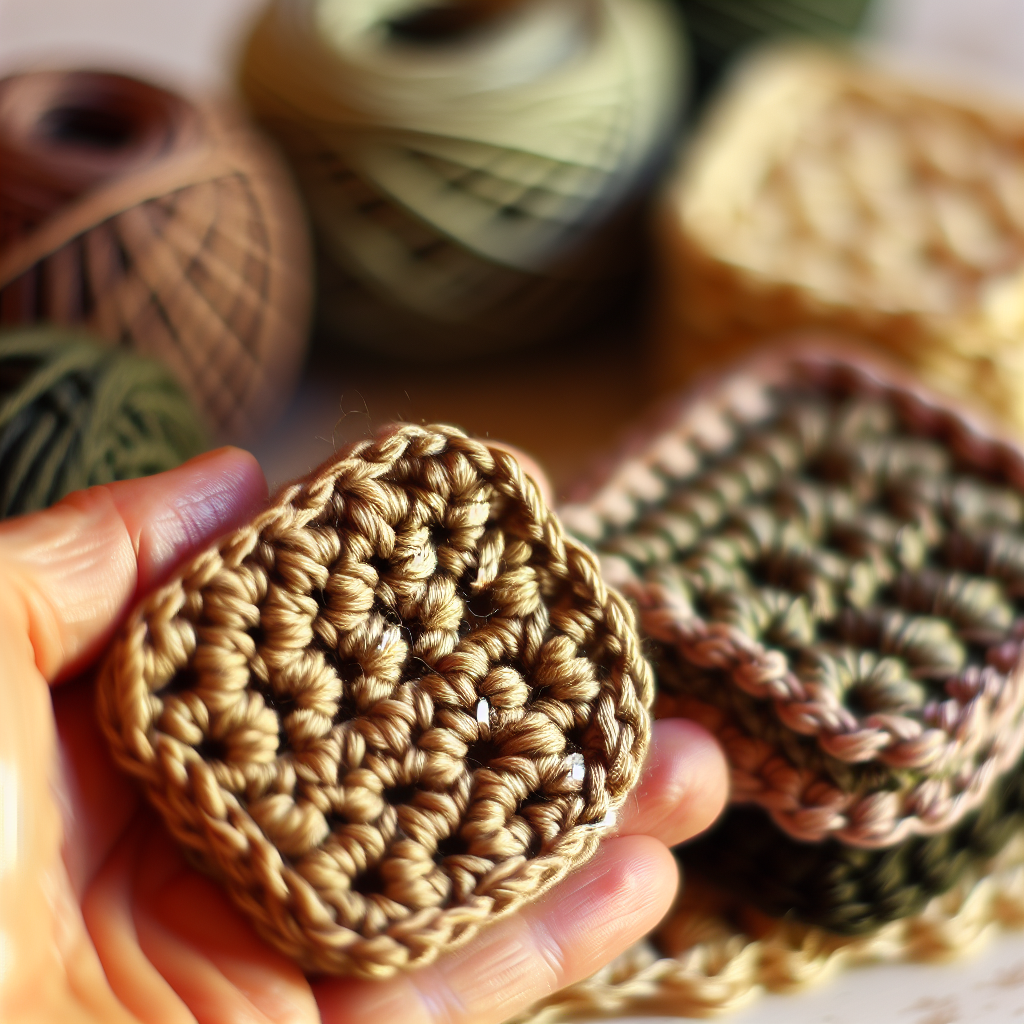In a world increasingly focused on sustainability, crocheting offers a delightful way to create practical items that contribute to eco-friendliness. This article explores the art of making reusable face scrubbies and dishcloths through crochet. Not only will you learn the benefits of these eco-friendly alternatives, but you’ll also find step-by-step instructions to create your own, perfect for personal use or gifting.
Understanding the Benefits of Eco-Friendly Crochet
While crafting with yarn can be a relaxing hobby, it also holds the potential for significant environmental impact. Using crochet to create reusable face scrubbies and dishcloths stands out for several compelling reasons:
- Reducing Waste: Everyday items like cotton rounds and disposable dish sponges significantly contribute to landfill overflow. In contrast, crochet face scrubbies and dishcloths are washable, long-lasting, and create no waste when cared for properly, positively affecting our ecosystem.
- Budget-Friendly: While purchasing quality yarn may feel like a larger upfront cost, these durable creations save money over time. Unlike single-use products, which create ongoing expenses, you can continuously wash and reuse your scrubbies and dishcloths, leading to savings in your household spending.
- Customization: The ability to choose colors, patterns, and yarn textures allows every crocheter to express their unique style. Whether crafting for yourself or as gifts for loved ones, personalized items made from cotton yarn convey thoughtfulness and care.
Essential Materials and Skills for Crocheting
Before diving into your crochet journey, it is essential to gather the right materials and familiarize yourself with fundamental crochet skills. To make face scrubbies and dishcloths, you will need:
- Yarn: Opt for 100% cotton yarn, as its absorbency and durability make it ideal for these projects. Well-known brands such as Lily Sugar’n Cream, Bernat Handicrafter, and Red Heart Cotton provide excellent options.
- Hook: A 5.00 mm (H/8) crochet hook is recommended to create a sturdy fabric suitable for regular use and washing.
- Optional Tools: A tapestry needle for weaving in ends and scissors for trimming yarn can enhance your crafting experience.
This eco-friendly crochet project is accessible to both beginners and intermediate crocheters. Familiarity with basic crochet terms and techniques will be beneficial. Some essential stitches you’ll employ include:
- Chain (ch): A foundational stitch that forms the basis for most crochet items.
- Single Crochet (sc): This basic stitch is used extensively in various patterns.
- Double Crochet (dc): A taller stitch that allows for a looser fabric, adding versatility to your creations.
- Slip Stitch (sl st): Used for joining rounds or pieces together, ensuring a neat finish.
Armed with these materials and skills, you’re poised to create beautiful, reusable items that enhance your sustainable lifestyle. From here, we will explore the step-by-step patterns for crafting both face scrubbies and dishcloths, allowing you to apply your creativity and crafting skills to make sustainable choices.
As you embark on this eco-friendly crochet journey, remember that each scrubbie and dishcloth not only beautifies your daily routine but also contributes to a larger movement toward sustainability. Happy crocheting!

